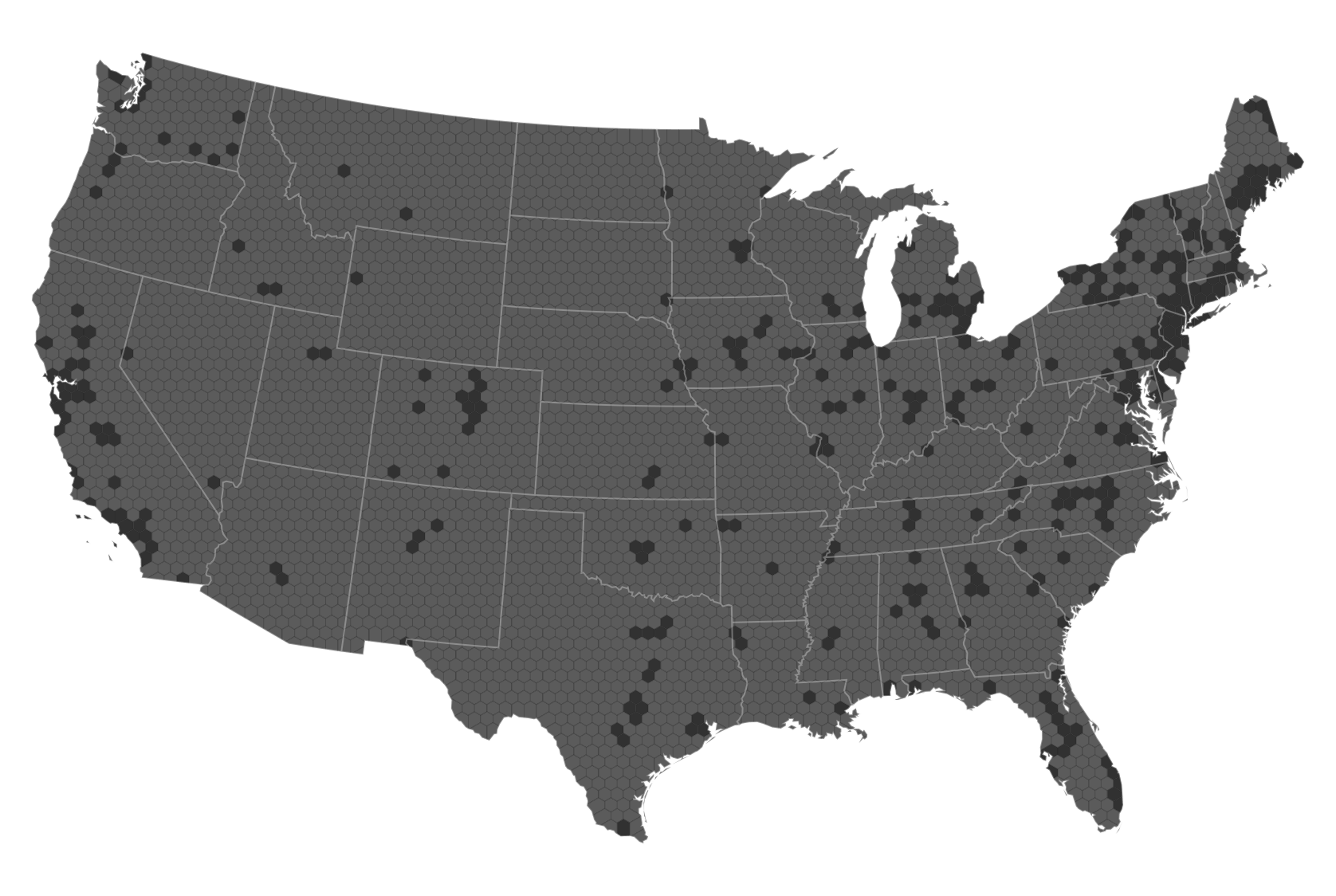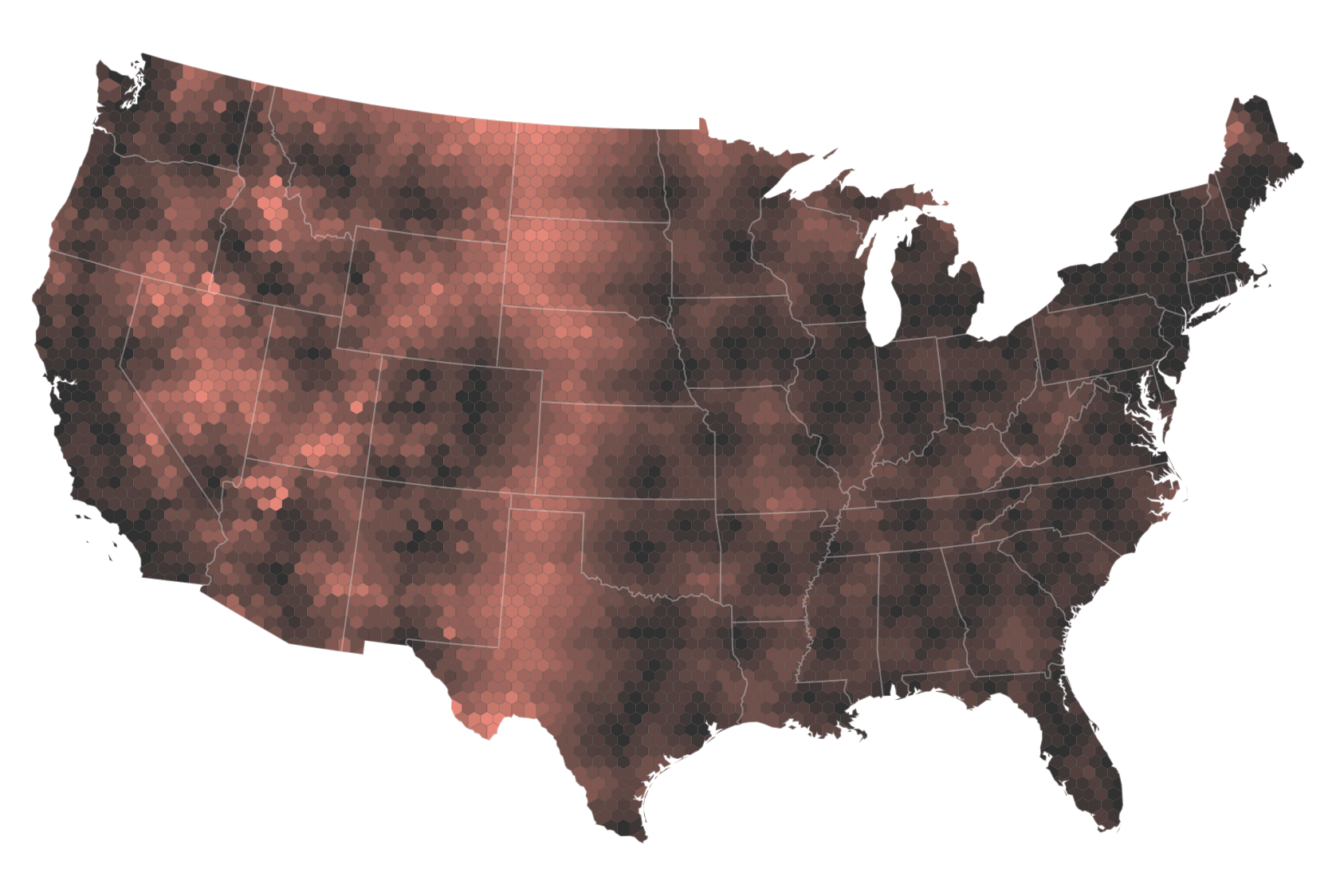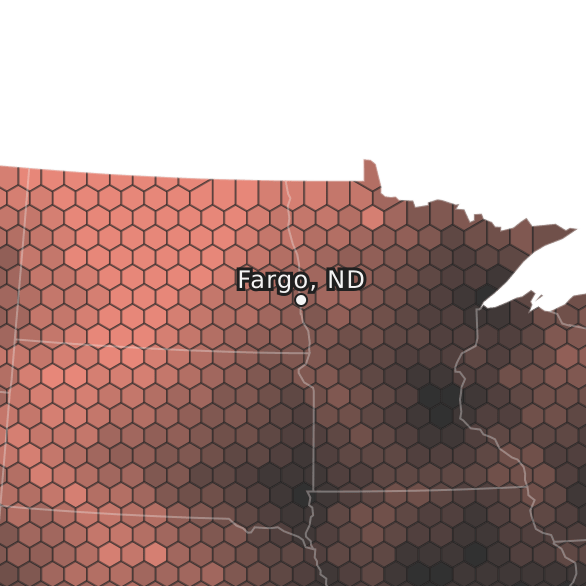How far is too far? An analysis of driving times to abortion clinics in the US.
September 2017
Twenty-seven US states specifically target clinics that provide abortions with laws called “Targeted Regulation of Abortion Providers,” also known as TRAP laws. They exist to regulate the operation of clinics beyond what is necessary for patients’ safety. There are a wide range of regulations imposed by TRAP laws that require drastic, expensive, or impractical changes for clinicians. If the clinics can’t meet these new requirements, they are forced to close.
In 2013, Texas passed a TRAP law called House Bill 2 (HB2). Out of the 41 clinics open in Texas at the time, only five fully met the new requirements. As the number of operating clinics in Texas was cut in half, the issue was brought to the 5th US Circuit Court of Appeals. It was argued that when nearby clinics close, pregnant patients experience an “undue burden” to travel upward of 150 miles to the nearest clinic. One of the judges, Edith Jones, hearing the case replied, “Do you know how long that takes in Texas at 75 miles an hour? This is a peculiarly flat and not congested highway.”
This drive would take about 5 hours round trip, and it could have impacted the nearly 275,000 women of reproductive age living in Texas’ Rio Grande Valley.
Although these regulations have since been overturned by the Supreme Court, consider Jones’s comment regarding travel distance and travel time: these measures are not synonymous. For some people in the US, round-trip travel time to the nearest abortion-providing clinic can be about nine hours.
We set out to quantify access to abortion clinics by measuring what really affects people: how long it takes to drive there. Let’s start by looking at the duration to and from the nearest clinic for different regions and well-populated cities.
There are 151 urban areas in the US with no accessible abortion clinics within a 1 hour round-trip drive.

Within a 1 hour round-trip
- No clinics accessible
- Clinic(s) accessible
- City without access
Note: An “urban area” has a population of 50,000+ according to 2015 estimates.
Having a clinic nearby is only part of the accessibility story. Not all clinics provide abortion services to all pregnant patients. Some clinics may only provide medication abortions, which are FDA-approved for patients 10 weeks pregnant or less. Surgical abortions can often be performed later in a pregnancy, but state legislation and other factors may limit the maximum number of weeks into a pregnancy they can be provided.
Although 89% of abortions occur when the patient is less than 12 weeks pregnant, later abortions are performed for several reasons. Let’s take a look at how accessibility changes for the residents of Boise, Idaho, at different stages of pregnancy, which is typically 40 weeks.
The nearest clinic at different stages of pregnancy
In Boise, patients who are 12 weeks pregnant can make a round-trip journey to a clinic in under an hour. If those same patients try to access care when they are 16 weeks along, their round-trip travel time is nearly nine hours. This same pattern of decreased access to abortion-providing clinics can be found in both rural and urban areas across the country.
Round-trip time to the nearest clinic at 8 weeks pregnant.

Travel time (hours)
- <1
- 1
- 2
- 3
- 4
- 5
- 6
- 7
- 8
- 9
- 10
- 11
- 12+
Note: The second trimester begins at week 13.
Residents of big metropolitan cities, such as New York, Miami, and Seattle, will have access to nearby abortion services regardless of how many weeks pregnant they are. But people living in cities such as El Paso, Texas, or Springfield, Missouri, have less access, particularly when they are further along in their pregnancy.
Many travelers from these cities drive long distances to their nearest clinic to be met with waiting periods and other state-imposed regulations, which increase the length of their trip. For instance, residents of Meridian, Idaho, who are 20 weeks pregnant would need to make a 10 hour round-trip journey to Utah for services. After arriving in Utah, patients may need a hotel or be forced to return to Idaho and make the same 10 hour trip again: Utah requires that patients are present for two appointments spaced three days apart before abortion services can be provided.
Here are some of the other least accessible urban areas in the US.
Cities with the longest round-trip travel time in the US.
The number of hours it takes to travel round-trip to the nearest clinic at different stages in the pregnancy. Select a column to see the least accessible cities at different stages. Hover over a row for more details.
Long travel times to clinics cost patients both time and money. Frequently, patients require days off of work, a ride to and from the clinic, family-care services, and occasionally a hotel. Planning the logistics of such a trip have become so complicated that “abortion travel agencies” have been formed. And in some places, the journey may get even more complex.
In the first half of 2017, six states proposed TRAP laws to ban abortion entirely, and 28 states have proposed laws to ban abortion under some circumstances. Clinics in these 34 states are potentially in danger of drastic closures, mirroring what has happened in Texas. If these laws are passed and at-risk clinics close, how would access change?
Change in accessibility at 8 weeks if a clinic in North Dakota closes.
Fargo is home to the only clinic in North Dakota. State laws require clinicians to have admitting privileges to a hospital within 30 miles of the clinic.


Travel time (hours)
- <1
- 1
- 2
- 3
- 4
- 5
- 6
- 7
- 8
- 9
- 10
- 11
- 12+
Impact on nearby cities
Current
With closure
Change in accessibility at 12 weeks if a clinic in Louisiana closes.
Clinics in Louisiana must have an agreement with a nearby hospital and meet the same structural standards as surgical centers.


Travel time (hours)
- <1
- 1
- 2
- 3
- 4
- 5
- 6
- 7
- 8
- 9
- 10
- 11
- 12+
Impact on nearby cities
Current
With closure
Change in accessibility at 12 weeks if a clinic in Arkansas closes.
Clinics in Arkansas must have an agreement with a hospital within 30 miles and meet the same structural standards as surgical centers.


Travel time (hours)
- <1
- 1
- 2
- 3
- 4
- 5
- 6
- 7
- 8
- 9
- 10
- 11
- 12+
Impact on nearby cities
Current
With closure
Change in accessibility at 16 weeks if a clinic in Utah closes.
Clinicians in Utah must have admitting privileges at a hospital < 15 min. away. Clinics must meet the same structural standards as surgical centers.


Travel time (hours)
- <1
- 1
- 2
- 3
- 4
- 5
- 6
- 7
- 8
- 9
- 10
- 11
- 12+
Impact on nearby cities
Current
With closure
Change in accessibility at 16 weeks if a clinic in Oklahoma closes.
Clinics in Oklahoma must have an agreement with a nearby hospital and meet the same structural standards as surgical centers.


Travel time (hours)
- <1
- 1
- 2
- 3
- 4
- 5
- 6
- 7
- 8
- 9
- 10
- 11
- 12+
Impact on nearby cities
Current
With closure
In the larger discussion surrounding abortion, access is only one element. If you’d like to learn more, here are some resources: Guttmacher Institute, Trapped Documentary, the Supreme Court Blog Decision on Texas Case.
Methodology
Data for this story excluded hospitals and physicians because clinics account for about 95% of annual abortions in the US. All clinic locations were obtained from Safe Place Project and current operating status of each clinic was obtained manually. Detailed information regarding timing cut-offs on procedures (i.e., the maximum number of weeks into a pregnancy that the clinic will provide abortion services) were found on a clinic’s website or by calling the clinic directly. We used the maximum number of weeks that either a medical or a surgical abortion procedure will be performed at each clinic. Out of the 623 operating clinics included in our dataset, we were unable to obtain detailed timing information for just two. However, both of these clinics were found within large cities where other clinics also operate, so we do not believe that these missing data have a significant impact on our findings. Since these data are focused on driving duration from various locations to clinics, Alaska and Hawaii (which frequently require air travel) were excluded from this dataset.
We broke down the timing of abortion procedures into four equally-spaced categories: 8 weeks, 12 weeks, 16 weeks, and 20 weeks. The first two groups fall within the first trimester and the last two fall within the second trimester.
To determine driving times, we divided the contiguous US into approximately 4,500 equidistant points. We found the nearest clinic to each point and found the driving times for the six nearest clinics. If no roads existed within a 20 mile radius of the point (three instances), the clinic distance from a neighboring point was used. Round-trip driving times were rounded down to the nearest hour, and binned into one-hour increments to account for variation in departure location.
For city-specific data, only cities with >50,000 population (via 2015 data) were included.